|
The MAP News
467th Edition April 27, 2019 |
|
FEATURE MAP Team Evaluates Mangrove Conservation Potential at Kulhuduffushi, Maldives 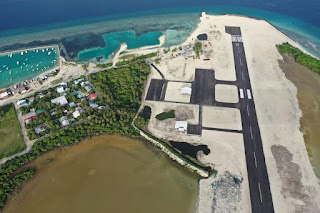 MALDIVES - In March 2019, MAP's co-founder and program director, Alfredo Quarto, was invited by the Minister of Environment of the Maldives, Dr. Hassan to visit the Maldives. MAP was asked to help advise on whether or not a damaged mangrove area found on the island of Kulhuduffushi could be saved or whether it was best to simply reclaim the remaining area of mangroves that had been adversely affected by recent construction of an airport runway that had been constructed cutting across a once healthy mangrove lagoon. Though most of the mangroves were destroyed by the runway development itself, some remnant areas of mangroves survived, but were affected by loss of normal hydrology because the runway blocked the original access points to the sea and could lead to dangerous flooding conditions during the ensuing monsoons. As well, increased heat and dry conditions led to a large fish die-off in the existing damaged water body due to rapid decrease in oxygen, and this generated calls to fill in the remnant mangrove wetland to prevent foul odors and increased mosquito breeding grounds. READ MORE AFRICA Planting Trees to Save the Mangrove  GUINEA - A group of local women in Guinea were so concerned about the disappearing mangrove forest due to the overuse of wood for drying and smoking fish that they decided to band together to do something about it. Their solution was simple, successful and sustainable. The women created cooperatives on four island villages to stop the deforestation of mangrove wood. They now use non-polluting solar driers to dry and smoke the fish. And they plant fast-growing Moringa trees to reforest the area and create a sustainable source of income, by drying and selling the tree’s nutritionally dense leaves and water-purifying seeds. Women living in the unique protected marine area in North of Guinea traditionally dry and smoke the fish caught by their husbands with mangrove wood. A group of concerned women decided to save the mangrove habitat by planting trees to generate income. READ MORE ASIA Illegal charcoal trade threatens Myanmar’s remaining mangroves  MYANMAR - Mangroves from Myanmar are illegally harvested and converted into charcoal that is sent to Thailand before it’s sold to China, South Korea, Japan, Malaysia and Indonesia by sea. Beyond a metal gate in Ranong, a port town in southern Thailand, a warehouse is filled nearly wall to wall and floor to ceiling with bags of illegally sourced charcoal. Workers hoist bags of charcoal off a long wooden boat powered by a small gas engine, which just arrived from Myanmar this morning. Others repackage charcoal into bags labeled as animal feed or that are left unmarked to be further processed before delivery to China, South Korea, Japan, Malaysia and Indonesia by sea. The charcoal that gets sent to Ranong is made from mangrove trees found in southern Myanmar. It’s illegal to produce charcoal in Myanmar for commercial use, so figures of cross-border trade are sketchy at best. (A 2017-2018 Mongabay investigation found that approximately $10 million worth of charcoal was being smuggled from Katha, a town in northern Myanmar, into China.) Thailand used to produce its own charcoal, but the government banned the practice in the late 1990s. READ MORE Can rice husk briquettes stem the tide of mangrove deforestation in Myanmar?  MYANMAR - The importance of mangroves in mitigating disaster was emphasized after Cyclone Nargis struck Myanmar in 2008, when communities were shielded by the swamp-like forests. For many in Myanmar, Cyclone Nargis was a wake-up call. When it made landfall in May 2008, it devastated the Irrawaddy Delta, a rural and low-lying region of the country. It became the country’s deadliest natural disaster: more than 100,000 people died, and many more were displaced. After Nargis, villagers living on the coast were reminded of how mangroves protect them: those located behind mangrove forests remained relatively unscathed. Villages with less protection had greater fatalities. Mangroves, an ecosystem of strong-rooted trees that grow in swampy, intertidal regions, would serve as an important bulwark in the case of another natural disaster like Nargis. But over the years, mangrove coverage in Myanmar has plummeted. By the early 1990s, Myanmar had lost up to 75 percent of its original mangrove cover, much of this land converted to aquaculture and rice fields, and the mangrove trees themselves burned as firewood or to make charcoal. READ MORE Irrigation, drought, sea level rise causing salt to build up in soils around the world 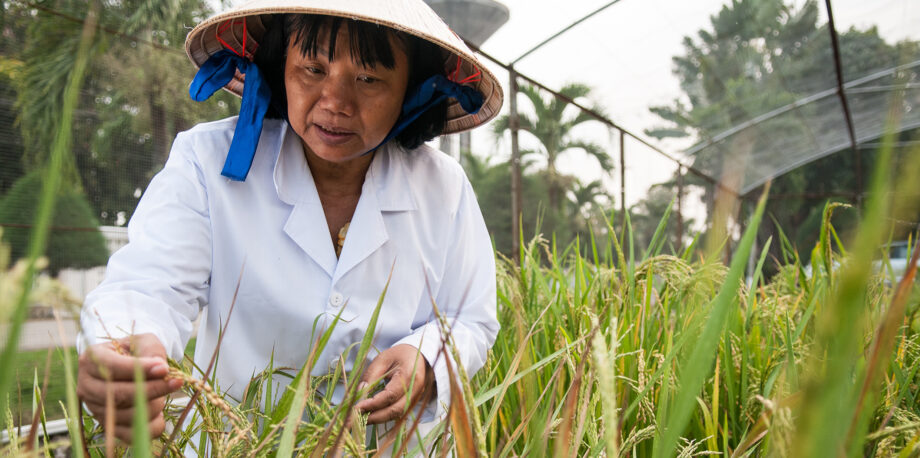 VIETNAM - Thi Tran, a young woman who farms 2 acres (0.8 hectares) of rice and vegetables in the coastal villages of the Ca Mau peninsula at the southern tip of Vietnam’s Mekong River delta, says she fears for her family. “When we moved here 10 years ago it was OK to farm. But we struggle to grow anything now and have to buy fresh water. The soil and the water gets saltier. If I don’t grow rice, I do not have anything to feed my family. We can only use this water for gargling and cooking. I think we will have to leave.” Tran is one of millions of farmers around the world who is a victim of a build-up of salts in the soil, known as salinization. Where she lives close to the coast this is caused both by poor drainage in the rice irrigation channels and by sea-level rise, which sees saltwater overtopping the defensive dikes and inundating her land. But she and other Ca Mau farmers now face a further problem. Severe droughts are becoming more common and a series of major dams on the Mekong have led to less freshwater reaching the delta. READ MORE CP Foods making commitments to reduce environmental impact  Thailand - In the past few months, Charoen Pokphand Foods has been making a concerted effort to reduce the company’s environmental impact, both domestically and abroad. The company made a pledge in 2018 to reduce the amount of plastic in its packaging, aiming for a 100 percent reusable, recyclable, or compostable packaging by 2025 for domestic operations, and 2030 for overseas operations. In addition to the packaging commitment, the company has also partnered up with public and civil sectors to restore natural habitats in the regions around its processing plants and farms. “We have made significant progress. So far, we have restored over 1,613 hectares of mangrove forest and watershed forest within the boundary of our operations. The projects also encourages community to live with nature,” Wuthichai Sithipreedanant, senior vice president of social responsibility and sustainability development for CP Foods, said in a release. READ MORE AMERICAS 200 hectares of mangrove threatened by fire in Campeche’s Los Petenes Biosphere Reserve 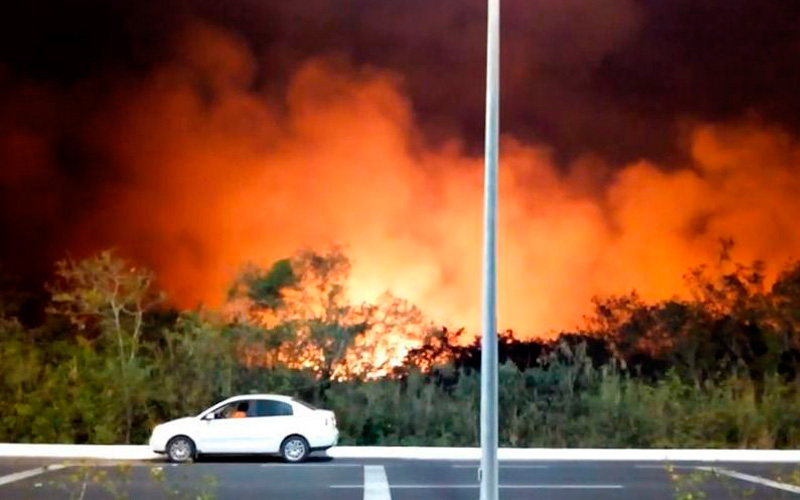 MEXICO - “The area of vegetation affected by the fire in the Biosphere Reserve of “Los Petenes” will take at least five years to recover”, said César Uriel Romero Herrera, director of this Reserve that is managed by the National Commission of Natural Protected Areas (Conanp), stressing that the damage could’ve been greater if the mangroves were burned. The biologist explained that the recovery of the mangrove would be a slower process since it would take decades for this type of natural resource to be fully recovered, and added, “it is fundamental to understand the importance of our ecosystems and know that within the Biosphere ‘Los Petenes’ there is a diversity of living beings, that depend on each other and make up a system and all of them have a specific task for the preservation of life” He stated that fortunately, due to the coordination of the different institutions that exist in the state, it was possible to stop this big magnitude fire in “Los Petenes” before it could reach the mangrove, and even when some plants and animals were lost, there were no human casualties. READ MORE Plastic Trash Tops Haul from 2nd ‘Great Mangrove Cleanup’ 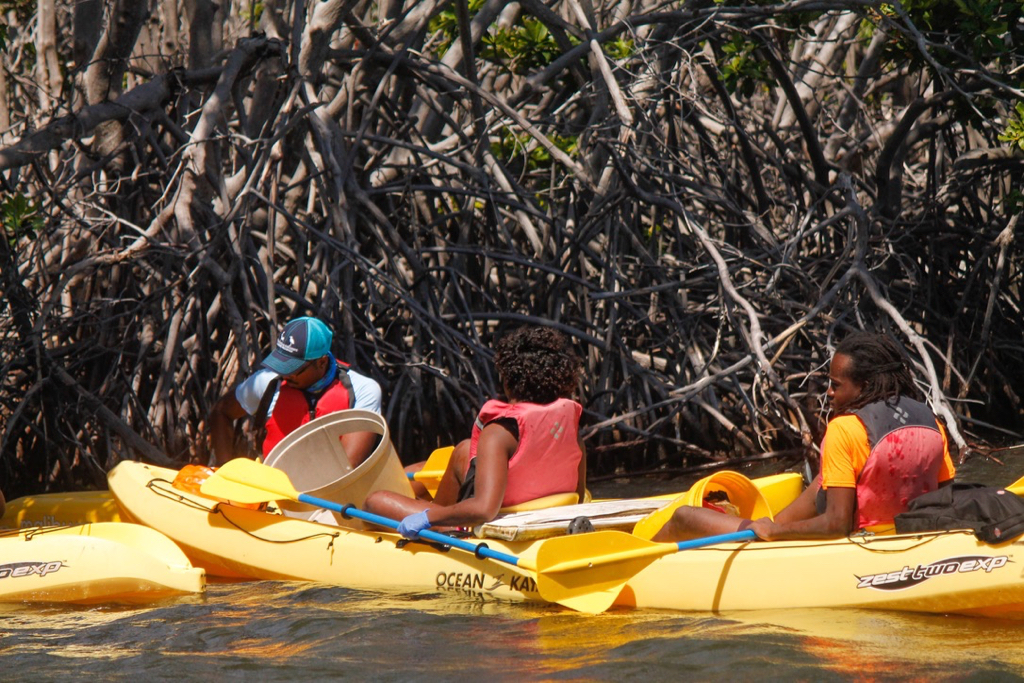 U.S. VIRGIN ISLANDS - Data from the Second Annual Great Mangrove Cleanup held recently shows that land-based plastic pollution – including water bottles, cups and grocery bags – comprise the majority of marine trash that gets caught in the mangrove forests around the St. Thomas East End Reserve. The data, compiled by the University of the Virgin Islands Center for Marine and Environmental Studies, shows that among the 1,800 total pounds of trash collected were 246 plastic beverage bottles, 133 plastic pieces, 114 other plastic bottles, 113 plastic cups and plates, 92 plastic grocery bags, 89 other plastic bags and 83 other plastic or foam packaging. “Like last year, the most common item we collected were plastic beverage bottles. What that tells me is that plastic beverage bottles are a consistent marine debris problem for St. Thomas, so we should all be thinking more about what we are drinking out of, where we dispose of it, and where it may end up,” said Kristin Grimes, assistant professor at the Center for Marine and Environmental Science. READ MORE An integral valuation of mangrove’s ecosystem services in a marine protected area.  COLUMBIA - In one of the most biodiverse regions of Colombia, the national government has proposed building a port within the protected area of the Tribuga-Corrientes cape, on Colombia’s northern Pacific coast. This port would destroy mangroves and the ecosystem services (that is, the tangible benefits that nature provides) that local communities rely on. A new study puts an exact price tag on the cost of destroying those mangroves: If the port is built, it would cost US$ 230 million per year in lost ecosystem services such as providing habitat for fish, protecting the coast from storms and storing carbon. Plans for the port have been discussed for close to a decade, and local organizations have been trying to stop it for just as long with little success. To prove the detrimental impact that the port — and by default, the destruction of the mangroves — would have on the economy, the researchers analyzed the value of the mangroves through three distinct lenses: monetary (the economic value to fisheries, other natural resources, etc.); sociocultural (the value to surrounding communities); and ecological (storing carbon, biodiversity, etc.). READ MORE Conserving mangroves, a lifeline for the world 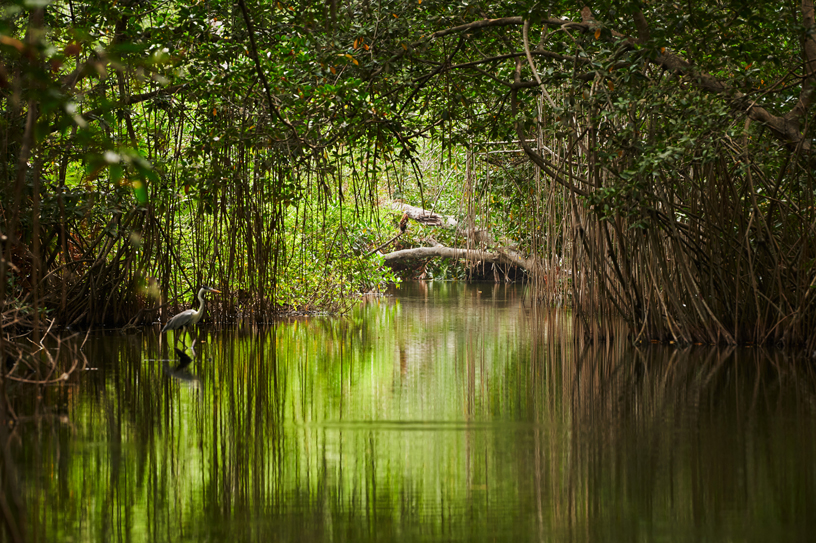 COLUMBIA - The roots of a mangrove tree are like veins. They rise up and plunge down into the salty waters of Cispatá Bay in Córdoba, Colombia, along the coast of the Caribbean Sea, sprawling in every direction. A series of channels have formed an arterial highway connecting to the Sinú River, providing single-lane access into and out of the mangroves where fishermen and loggers begin their day’s work. “Right now we have a lot of people working on opening channels to keep the water flowing,” says Luis Roberto Canchila Avila, president of Asoamanglebal, the first mangrove association in San Bernardo del Viento in Córdoba. “Because we are in summer, there are parts where the water flow is different and fish die as they are left without oxygen.” It’s a delicate balance: too much river water or too little salt water, and the mangroves could be destroyed. READ MORE EUROPE UK NGOs and unions call for new law to curb multinationals’ global abuses  U.K. - On the day that the UK Supreme Court rules on whether 1,800 Zambian villagers can continue their claim against mining giant Vedanta, more than 20 organisations gathered to launch call for legal reform to make UK multinationals accountable for human rights abuses and environmental damage linked to their global operations and supply chains. Campaigners are calling on the UK government to close legal loopholes that allow British multinationals to evade responsibility for human rights abuses and environmental damage linked to their international subsidiaries and supply chains. 21 human rights, environmental and development NGOs, the UK’s biggest union and the TUC are calling for legislation to require firms to take action to prevent abusive practices and environmental damage, and to make it easier to hold them to account in court when they fail to act. READ MORE Transforming conservation - a rights-based approach 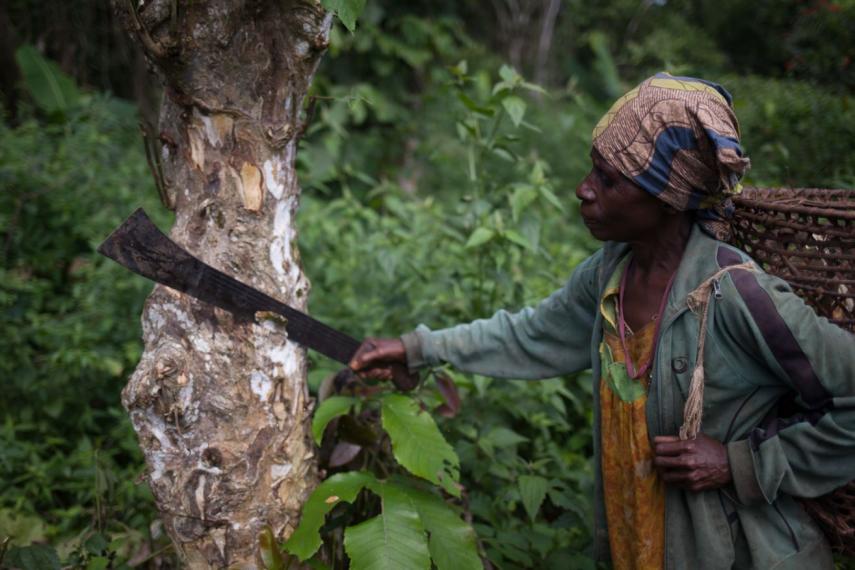 NETHERLANDS - In recent weeks, there has been significant press coverage of human rights abuses connected with the work of international conservation charities, including WWF. This summary outlines recommendations emerging from nearly 30 years work in preventing human rights abuses in protected-area conservation programmes. These allegations are consistent with evidence of human rights violations against indigenous peoples and local communities that Forest Peoples Programme and partners have encountered and documented over the course of nearly 30 years of work. While there have been moments when progress in this area seems to have been made changes to practice on the ground have been limited or quickly reversed, despite repeated calls by human rights organisations over decades. Without such change, Victoria Tauli-Corpuz, the UN Special Rapporteur on the Rights of Indigenous Peoples, warns that conservation will continue to “ignore the growing body of evidence that forests thrive when Indigenous Peoples remain on their customary lands and have legally recognised rights to manage and protect them.” - Download the full report here. Back to Top |
ACTION ALERTS Tell HSBC: Stop Profiting From Destruction – Sign the petition Halt further destruction of primary mangrove forests in the Maldives. We are urging you to write letters to the recently elected president of the Maldives and his environmental minister View Sample letter Save Pulau Kukup National Park - second largest mangrove island in the world. Sign The Petition 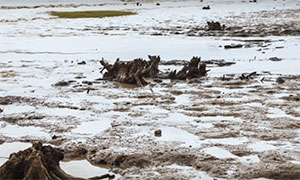 Restoring The Natural Mangrove Forest Watch movie  Community Based Ecological Mangrove Restoration in Rufiji Delta Video: Mangroves for the Future - A look bacK. As the latest phase of Mangroves for the Future (MFF) draws to a close, this video highlights some of the project’s most successful initiatives – from local women supporting national park management in Viet Nam to an island in the Maldives that has become a model for waste management, and everything in between. View Here Making the case for Emergency Climate Change Action
|
Mangrove Action ProjectClick here to view past newsletters |
|
Search News Archive
Saturday, April 27, 2019
MAP News Issue 467 - April 27, 2019
Subscribe to:
Post Comments (Atom)
-
The community of adults and youth in Cayman Islands has come together recently to release a series of educational videos. Each is geared to...
-
By Alfredo Quarto, Program & Policy Director Co-founder, MAP There is a rather urgent situation concerning the bio-invasion of the Son...
-
By: Isabel Robinson, MAP Volunteer Intern Some months ago I decided to come to Thailand and do an internship in mangrove conservation, ...
MAP News Issue #596 = April 20, 2024
ENTRIES NOW OPEN! Mangrove Photography Awards 2024 10 Years Celebrating Mangroves GLOBAL - MAP has launched our 10th Mangrove Photograp...



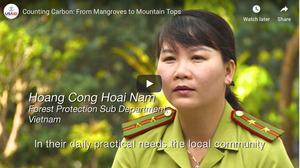















No comments:
Post a Comment
Note: Only a member of this blog may post a comment.